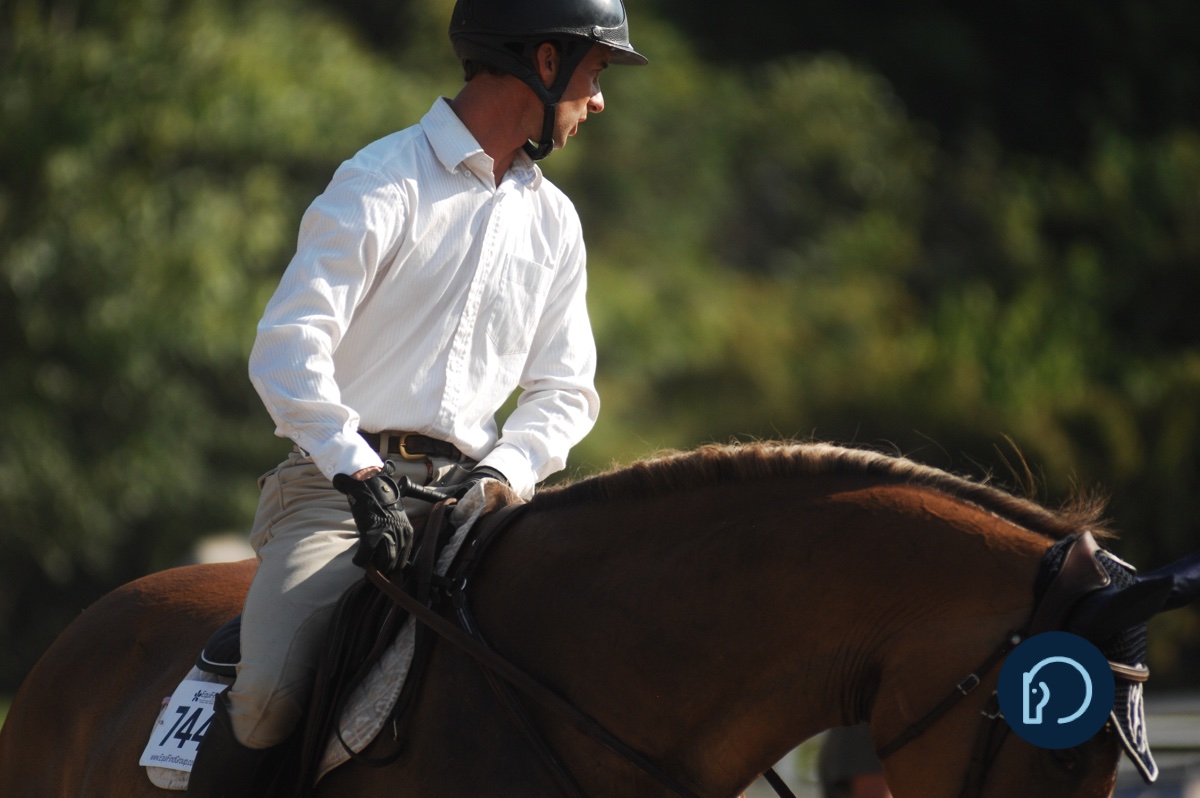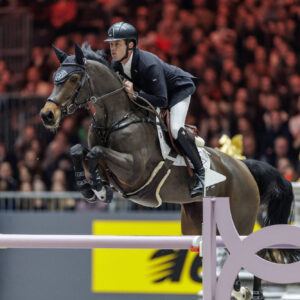While practicing his basic walk-trot-canter, True, my three-year-old Warmblood gelding, is captivated by new sights, sounds, and scents.
He was transfixed by his first bicycle and his first child. In the young or green horse’s mind, “new” is the equivalent of “scary.” After all, horses have prey brains designed to notice risks and flee instantly. We do not.
One day about a month after his arrival, True caught sight of the edge of a wooden mounting block made with sharp angles that fit very tightly into the corner of an arena, and oh boy. He leaped backward off all four feet, spun a tight 180, and galloped about 10 strides in two seconds flat before I stopped him. You’d think a cobra had raised its head and spat venom at us!
Then there are the Killer Birds. One side of our usual arena is flanked by trees and bushes that contain invisible chirping birds. They’re only about three inches long, same color as the bark, and they dart around in tiny movements. True is convinced they have murderous intentions.
One day, I was asking for the canter along that side when one of the little devils chirped. Woo-hoo! True performed his lightning spin-and-bolt routine, leaving me in the dirt. He galloped to the opposite side of the arena, then looked back as if surprised that I was not with him. He immediately trotted back to me and put his nose on my arm.
Horse Brain, Human Brain is full of information about shying. I’ll summarize very briefly: First, equine perception receives information that we humans cannot even sense. Fast tiny movements included. Second, equine brains optimize the chances of shying, while human brains minimize them. Our brains automatically categorize all views of an item as the same object. The horse’s brain doesn’t do that. Third, equine brains pick up tiny nuances of human emotion, like fear or anxiety. If you’re worried about an upcoming umbrella opening suddenly, your horse knows it.
So, while I introduce True to basic flatwork under saddle, I also introduce him to nearby activity. Cars pull in and out behind bushes. Dogs bark. People open the trunks of their cars, like giant maws that swallow Dutch Warmbloods. Children squeal and play, with unusual gaits and quick limb movements. A deer steps out from under a tree next to the arena fence, just as we approach. Somebody clucks. People stand on fences. Toddlers let go of balloons. Horses in an adjacent pasture go for a race.
So what can you do? In general, keep your heels WAY down to secure your seat in the saddle, and keep your back straight. Unfortunately, the fetal position won’t help you. When the baby turns toward a distraction, touch his head back to your attention with one rein. Try to keep your muscles relaxed and your mind calm.
Easier said than done, I know.
Along with that preparation, ignore the frightening activity. Your horse looks to you as his guide and leader. Try to convey to him that there is nothing to be worried about. You might have to move to an area farther away from scary events, but don’t stop working.
If the horse does shy, spin, or bolt, regain your balance and keep him moving forward. Maybe he will need to slow to a walk or leave a wide berth along the rail. That’s OK. But stopping is a reward, and we don’t want babies to get the idea that sudden moves are desired behavior.
It’s tempting to soothe spooky horses, but this often involves patting and stroking and soft sweet voices. All of which are rewards, right? Instead, I try to help True through the scary part with my riding aids the first few times, often working in a series of loops that gradually become closer to the frightful item. The time to stroke and praise is after he has negotiated the area successfully.
If something is stupendously frightening, to the point that True won’t move forward at all, I dismount and work from the ground, sometimes enlisting an equine buddy. All of these techniques are described in Horse Brain, Human Brain. Sometimes you just have to teach the horse that the odd-shaped mounting block won’t eat him.
Equine brains are designed to shy. That’s what kept them alive for 55 million years! So, we cannot change that aspect of the equine brain; we can only work with it by teaching the horse to either accept or delay. Acceptance comes when the young horse has the same experiences many times with no bad effects—someday True won’t care about birds that chirp. Delay allows the horse to halt his flight just long enough to receive some guidance from the non-shying human brain.
True is already becoming a little slower in his spins and a little less broad in his sideways leaps. We’re on the road to success.
Related reading:
- Chill Out in the Round Pen
- Working the Whoa
- Let’s Ride Already!
- Establish Pace Without Neural Fatigue
- Canter Departs
Brain-Based Horsemanship is a weekly column that chronicles Janet Jones, PhD, and her journey with True, a Dutch Warmblood she trained from age three using neuroscience best practices. Read more about brain-based training in Jones’ award winning book Horse Brain, Human Brain.

A version of this story originally appeared on janet-jones.com. It is reprinted here with permission.


 June 28, 2023
June 28, 2023 



























